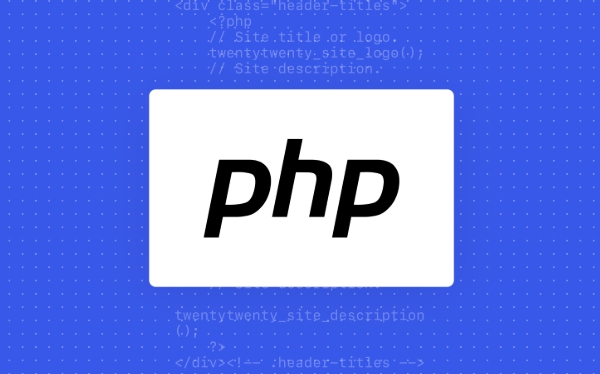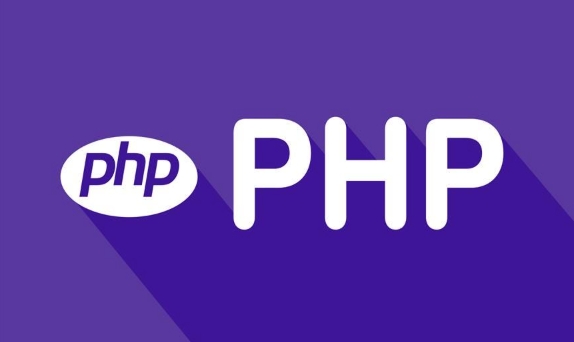 Backend Development
Backend Development
 PHP Tutorial
PHP Tutorial
 Harnessing the Power of WSL 2 for a Linux-Native PHP Development Workflow
Harnessing the Power of WSL 2 for a Linux-Native PHP Development Workflow
Harnessing the Power of WSL 2 for a Linux-Native PHP Development Workflow
Jul 26, 2025 am 09:40 AMWSL 2 is the new standard for serious PHP development on Windows. 1. Install WSL 2 with Ubuntu using wsl --install, then update with sudo apt update && sudo apt upgrade -y, keeping projects in the Linux file system for optimal performance. 2. Install PHP 8.3 and Composer via Ond?ej Sury’s PPA and global Composer setup, ensuring production-like consistency. 3. Use Nginx and PHP-FPM by installing Nginx, configuring a site in /etc/nginx/sites-available, enabling it with a symbolic link, and restarting Nginx to achieve true environment parity. 4. Install MySQL in WSL, secure it, create a database, and connect using DB_HOST=127.0.0.1 in .env to enforce TCP connections, with access from Windows tools like TablePlus via localhost:3306. 5. Access the site from Windows browsers at http://localhost thanks to WSL 2’s automatic port forwarding, verifying Nginx status if needed. 6. Integrate with VS Code using the Remote - WSL extension to open projects directly in Linux, enabling full IntelliSense, Linux terminal, Git, and seamless Xdebug integration. 7. Optionally install Docker in WSL for Linux-native services like Redis using curl -fsSL https://get.docker.com | sh, adding the user to the docker group and running containers accessible from both WSL and Windows. This setup delivers a Linux-native PHP development experience with full tooling integration and environment consistency from development to production.

Running a PHP development environment on Windows used to mean wrestling with XAMPP, WAMP, or Docker setups that never quite felt “native.” But with WSL 2 (Windows Subsystem for Linux 2), that’s all changed. You can now run a real Linux environment directly on Windows—complete with systemd support, full bash access, and seamless file system interoperability—making it an ideal platform for a modern, Linux-native PHP workflow.

Here’s how to harness WSL 2 to build a fast, reliable, and production-like PHP development setup.
? 1. Set Up WSL 2 with a Developer-Friendly Distro
Start by installing WSL 2 if you haven’t already:

wsl --install
This command installs Ubuntu by default (recommended), but you can choose others like Debian or Alpine.
After installation, update the system:

sudo apt update && sudo apt upgrade -y
Why Ubuntu? It has great PHP package support, active community help, and tools like add-apt-repository make adding third-party repos (like Ond?ej Sury’s PHP PPA) a breeze.
? Pro tip: Keep your project files in the Linux file system (
/home/youruser/projects) rather than/mnt/c/for better performance—especially with Composer and file watchers.
? 2. Install PHP, Composer, and Key Extensions in Linux
Now install PHP directly in your WSL environment. Use the trusted Ond?ej Sury PPA for up-to-date versions:
sudo add-apt-repository ppa:ondrej/php sudo apt update sudo apt install php8.3-cli php8.3-fpm php8.3-mysql php8.3-sqlite php8.3-mbstring php8.3-xml php8.3-curl php8.3-zip
Then install Composer globally:
curl -sS https://getcomposer.org/installer | php sudo mv composer.phar /usr/local/bin/composer
Now you’re running the same PHP binaries used on most Linux-based production servers—no more "it works on my machine" issues due to Windows-specific path or extension quirks.
? Bonus: Run
php -mto see all loaded modules. Compare this with your staging/production server for consistency.
? 3. Use a Real Linux Web Server Locally (Nginx PHP-FPM)
For true environment parity, avoid built-in PHP servers (php -S) in favor of Nginx PHP-FPM, just like most production Laravel or Symfony apps.
Install Nginx:
sudo apt install nginx
Create a basic site config at /etc/nginx/sites-available/myapp:
server {
listen 80;
root /var/www/myapp/public;
index index.php;
location / {
try_files $uri $uri/ /index.php?$query_string;
}
location ~ \.php$ {
fastcgi_pass unix:/var/run/php/php8.3-fpm.sock;
fastcgi_index index.php;
fastcgi_param SCRIPT_FILENAME $document_root$fastcgi_script_name;
include fastcgi_params;
}
}Enable it:
sudo ln -s /etc/nginx/sites-available/myapp /etc/nginx/sites-enabled/ sudo nginx -t && sudo systemctl restart nginx
Now your app runs under the same stack as production—catching misconfigurations early.
? 4. Connect to MySQL/PostgreSQL Running in WSL
Install MySQL (or PostgreSQL) directly in WSL:
sudo apt install mysql-server sudo mysql_secure_installation
Secure it, create a database, and update your .env file:
DB_CONNECTION=mysql DB_HOST=127.0.0.1 DB_PORT=3306 DB_DATABASE=myapp DB_USERNAME=root DB_PASSWORD=
Note: Use 127.0.0.1, not localhost, to force TCP instead of socket connections (which can be finicky in WSL).
You can also use tools like TablePlus or MySQL Workbench from Windows by connecting to localhost:3306—it forwards directly into WSL 2.
? 5. Access Your Site from Windows Browsers
By default, Nginx listens on port 80 in WSL. Thanks to WSL 2’s automatic port proxying, you can access your app from Windows at:
http://localhost
No extra configuration needed! WSL 2 forwards ports automatically between Windows and the Linux VM.
?? If it doesn’t work, ensure Nginx is running:
sudo service nginx status
? 6. Integrate with VS Code (Best-in-Class WSL Support)
Install Visual Studio Code and the Remote - WSL extension.
Then, from your WSL terminal:
code /var/www/myapp
This opens VS Code connected directly to the Linux environment. You get:
- Full IntelliSense using Linux paths
- Terminal running in WSL
- Git powered by Linux (no more CRLF headaches)
- Xdebug working seamlessly
Set up launch.json for Xdebug and debug PHP requests directly—just like a native Linux dev.
? 7. Optional: Add Docker (Linux Version) for Extra Services
Need Redis, Mailhog, or Elasticsearch? Run them via Docker inside WSL 2, not Docker Desktop’s Windows engine.
Install Docker in Ubuntu:
curl -fsSL https://get.docker.com | sh sudo usermod -aG docker $USER
Log out and back in, then run:
docker run -d -p 6379:6379 redis
Now Redis is available at 127.0.0.1:6379 from both WSL and Windows.
? Benefit: All containers run on Linux, so no compatibility layers or performance hits.
Final Thoughts
WSL 2 bridges the gap between Windows convenience and Linux development authenticity. With it, you get:
- A real Linux kernel and process model
- Native PHP, extensions, and services
- Seamless integration with Windows tools
- Environment consistency from dev to prod
You’re no longer “developing on Windows with Linux tools”—you’re developing in Linux, with Windows as your desktop companion.
Set it up once, and you’ll wonder how you ever managed without it.
Basically, if you're doing serious PHP work on Windows, WSL 2 isn't just nice to have—it's the new standard.
The above is the detailed content of Harnessing the Power of WSL 2 for a Linux-Native PHP Development Workflow. For more information, please follow other related articles on the PHP Chinese website!

Hot AI Tools

Undress AI Tool
Undress images for free

Undresser.AI Undress
AI-powered app for creating realistic nude photos

AI Clothes Remover
Online AI tool for removing clothes from photos.

Clothoff.io
AI clothes remover

Video Face Swap
Swap faces in any video effortlessly with our completely free AI face swap tool!

Hot Article

Hot Tools

Notepad++7.3.1
Easy-to-use and free code editor

SublimeText3 Chinese version
Chinese version, very easy to use

Zend Studio 13.0.1
Powerful PHP integrated development environment

Dreamweaver CS6
Visual web development tools

SublimeText3 Mac version
God-level code editing software (SublimeText3)

Hot Topics
 Mastering PHP-FPM and Nginx: A High-Performance Setup Guide
Jul 25, 2025 am 05:48 AM
Mastering PHP-FPM and Nginx: A High-Performance Setup Guide
Jul 25, 2025 am 05:48 AM
NginxhandlesstaticfilesandroutesdynamicrequeststoPHP-FPM,whichprocessesPHPscriptsviaFastCGI;2.OptimizePHP-FPMbyusingUnixsockets,settingpm=dynamicwithappropriatemax_children,spareservers,andmax_requeststobalanceperformanceandmemory;3.ConfigureNginxwit
 Setting Up PHP on macOS
Jul 17, 2025 am 04:15 AM
Setting Up PHP on macOS
Jul 17, 2025 am 04:15 AM
It is recommended to use Homebrew to install PHP, run /bin/bash-c"$(curl-fsSLhttps://raw.githubusercontent.com/Homebrew/install/HEAD/install.sh)" to install Homebrew, and then execute brewinstallphp or a specified version such as brewinstallphp@8.1; after installation, edit the php.ini file in the corresponding path to adjust memory_limit, upload_max_filesize, post_max_size and display_
 Harnessing the Power of WSL 2 for a Linux-Native PHP Development Workflow
Jul 26, 2025 am 09:40 AM
Harnessing the Power of WSL 2 for a Linux-Native PHP Development Workflow
Jul 26, 2025 am 09:40 AM
WSL2isthenewstandardforseriousPHPdevelopmentonWindows.1.InstallWSL2withUbuntuusingwsl--install,thenupdatewithsudoaptupdate&&sudoaptupgrade-y,keepingprojectsintheLinuxfilesystemforoptimalperformance.2.InstallPHP8.3andComposerviaOnd?ejSury’sPPA
 Demystifying PHP Compilation: Building a Custom PHP from Source for Optimal Performance
Jul 25, 2025 am 06:59 AM
Demystifying PHP Compilation: Building a Custom PHP from Source for Optimal Performance
Jul 25, 2025 am 06:59 AM
CompilingPHPfromsourceisnotnecessaryformostprojectsbutprovidesfullcontrolforpeakperformance,minimalbloat,andspecificoptimizations.2.ItinvolvesconvertingPHP’sCsourcecodeintoexecutables,allowingcustomizationlikestrippingunusedextensions,enablingCPU-spe
 Deploying a Scalable PHP Environment on AWS EC2 from Scratch
Jul 26, 2025 am 09:52 AM
Deploying a Scalable PHP Environment on AWS EC2 from Scratch
Jul 26, 2025 am 09:52 AM
LaunchanEC2instancewithAmazonLinux,appropriateinstancetype,securesecuritygroup,andkeypair.2.InstallLAMPstackbyupdatingpackages,installingApache,MariaDB,PHP,startingservices,securingMySQL,andtestingPHP.3.DecouplecomponentsbymovingdatabasetoRDS,storing
 Automating Your PHP Environment Setup: Integrating PHP into a CI/CD Pipeline
Jul 26, 2025 am 09:53 AM
Automating Your PHP Environment Setup: Integrating PHP into a CI/CD Pipeline
Jul 26, 2025 am 09:53 AM
ChooseaCI/CDplatformlikeGitHubActionsorGitLabCIfortightversioncontrolintegrationandminimalinfrastructure;2.DefineaconsistentPHPenvironmentusingcontainerizationwithimageslikephp:8.2-cliorcomposer:latestandinstalldependenciesviacomposerinstall--no-inte
 Unlocking Peak PHP Performance: Configuring OPcache and JIT Compilation
Jul 24, 2025 pm 09:58 PM
Unlocking Peak PHP Performance: Configuring OPcache and JIT Compilation
Jul 24, 2025 pm 09:58 PM
OPcache and JIT are the core tools for PHP8.0 performance optimization. Correct configuration can significantly improve execution efficiency; 1. Enable OPcache and set opcache.enable=1, opcache.memory_consumption=192, opcache.max_accelerated_files=20000, opcache.validate_timestamps=0 to implement opcode caching and reduce parsing overhead; 2. Configure JIT to enable tracking JIT through opcache.jit_buffer_size=256M and opcache.jit=1254
 Troubleshooting Common PHP Installation Pitfalls: A Diagnostic Checklist
Jul 26, 2025 am 09:50 AM
Troubleshooting Common PHP Installation Pitfalls: A Diagnostic Checklist
Jul 26, 2025 am 09:50 AM
VerifysystemrequirementsanddependenciesbyconfirmingOScompatibilityandinstallingessentiallibrariesandbuildtools,usingpackagemanagerslikeaptoryumtosimplifydependencymanagement.2.CheckPHPconfigurationandcompilationerrorsbyrunningaminimal./configurecomma





